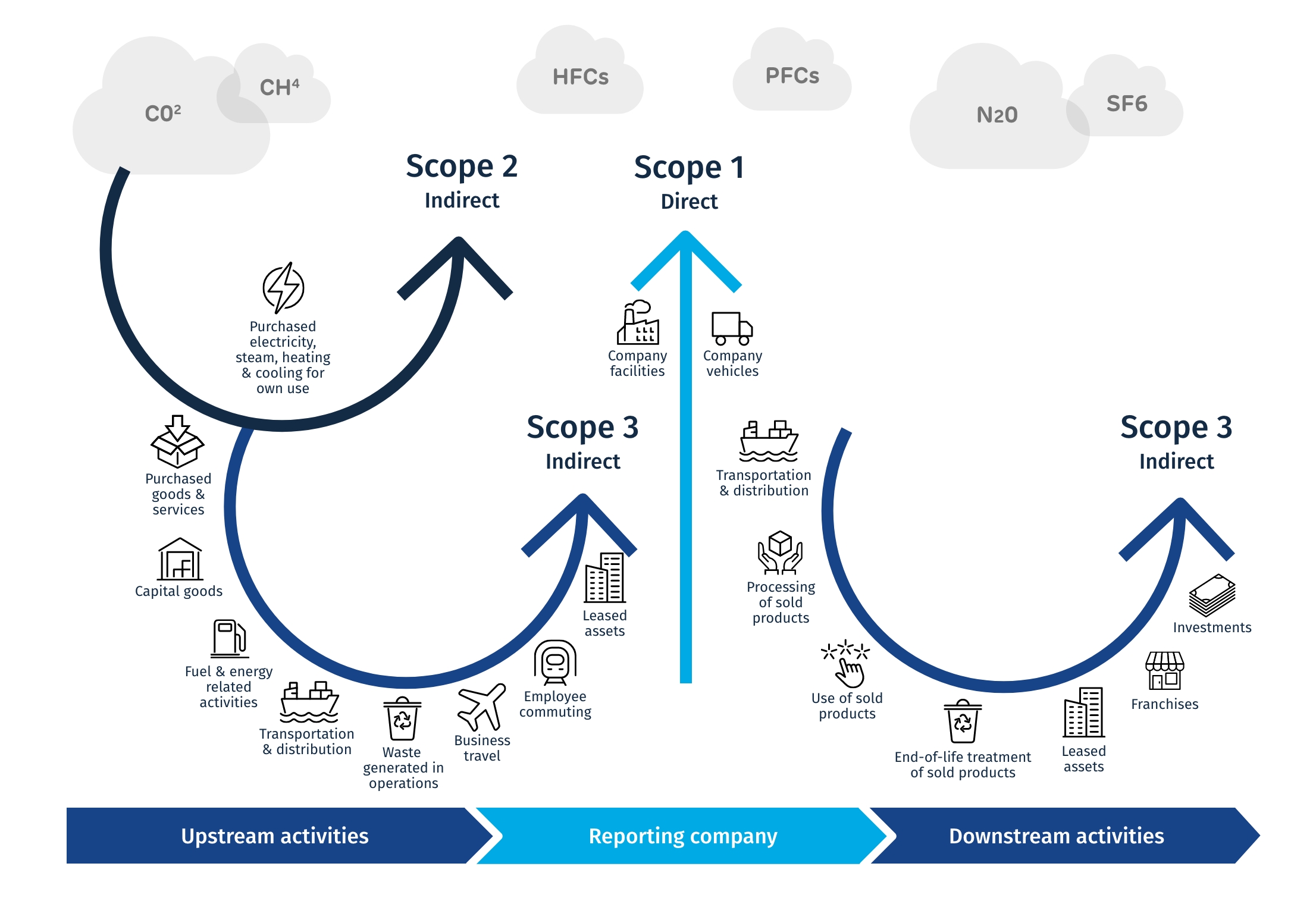Every year, greenhouse gas (GHG) emissions reduction becomes more urgent as the effects of climate change become more alarming. Over 190 countries have now adopted The Paris Agreement, a global target to limit global warming to below 2°C - or ideally 1.5°C - and reach net zero by 2050.
Manufacturers, just like companies in every other industry, have a role to play in reaching this target. But to make a difference, you need to measure and understand where your GHG emissions are sourced from in the first place. That's where understanding Scope 1, 2 and 3 emissions comes in handy.
Reducing emissions is a business imperative
The science is clear - keeping global warming to 1.5°C reduces the risks of severe climate impacts, some of which may be irreversible. Unless we take action now, we will see an increased frequency and intensity of heatwaves, floods and droughts, posing many risks to people, animals, ecosystems and economies.
Meeting this goal requires a strong commitment from companies and organisations around the world to set climate action strategies and take short and long-term actions that focus on reducing GHG emissions.
“It’s now or never, if we want to limit global warming to 1.5°C; without immediate and deep emissions reductions across all sectors, it will be impossible.” Jim Skea, Co-Chair of IPCC Working Group III
Three 'scopes' for measuring emissions
Emissions reduction is essentially meaningless without standards for measurement. So in the race to meet net zero, Greenhouse Gas (GHG) Protocol has set some ground rules to follow.
The most well-known system the Protocol has established for GHG emissions measurement is its Scope 1, 2, and 3 emissions categories.
You may have heard these terms used before. But what do they mean?
Scope 1, 2 and 3 emissions explained
Scope 1 emissions
Scope 1 covers direct emissions from sources that a company owns or controls directly. This includes things like the petrol or diesel used in company vehicles.
Scope 2 emissions
Scope 2 covers indirect emissions from the generation of purchased energy, i.e. electricity, heating, and cooling.
Scope 3 emissions
Scope 3 covers indirect emissions that occur in the value chain as a result of a company’s operations, including upstream and downstream emissions.
- Upstream emissions are those that can be attributed to any purchased goods and services, capital goods, fuel and energy-related activities, waste generated in operations, transportation and distribution activities, as well as employee commuting and business travel.
- Downstream emissions come from the use and disposal of a company’s goods and services, covering transportation and distribution and the processing, use, and end-of-life treatment of sold products.
 Measuring Scope 1, 2 and 3 emissions
Measuring Scope 1, 2 and 3 emissions
Today, companies are judged not only by their impact on their customers and employees but also by their impact on the planet. And the demand for companies to disclose their carbon footprint and demonstrate measurable advancements toward their ESG objectives is increasing.
Scope 1, 2, and 3 emissions categories provide companies with a clear way to demonstrate their impact on the environment and identify opportunities to make a meaningful difference.
Reducing carbon emissions also tends to go hand-in-hand with cost savings. Switching to renewable energy, for example, can come with significant cost savings and reduce your Scope 2 emissions.
Where to start
Scope 1 and 2 emissions are naturally easier to measure, as they are mostly within a company’s control. You should have the source data you need to convert direct purchases of gas and electricity into a value in tonnes of GHGs. This primary data will usually sit with procurement, finance, or should you have one, within the sustainability function.
With all this data, it’s easy to see where reductions can be made. For example, switching energy providers, moving to renewable energy, or transitioning to electric vehicles could drastically reduce your Scope 1 and 2 emissions.
GHG Protocol has developed a set of calculation tools to help companies calculate their GHG emissions and measure the benefits.
Measuring Scope 3 emissions is a little more complicated. This is because few companies own the entire value chain of their products, and the emissions often depend on estimates and reliance on outside parties to conduct measurements.
The trouble is, Scope 3 emissions account for the biggest amount of GHG emissions. For many companies, Scope 3 emissions can account for over 70% of their carbon footprint. So manufacturers looking to adopt best practices will need to commit to tackling Scope 3 emissions as part of their plans. Because ultimately, this is where they can make the biggest difference.
To address Scope 3 emissions, manufacturers must take a proactive approach across all supply chain tiers. The production of raw materials is often the most carbon-intensive stage in the manufacturing process, so securing green sources of these materials will be a crucial step in reducing emissions. We'll tackle this in more detail in a later blog post, so keep an eye out.
Summary
Understanding your carbon footprint and the different types of emissions can be a time-consuming and challenging process. But it's a crucial step to reducing your company's environmental impact and achieving climate action goals.
Scope 1, 2 and 3 emissions provide companies with a clear way to categorise the emissions they create in their operations and wider value chain. Companies succeeding in reporting all three scopes will gain a sustainable competitive advantage.

